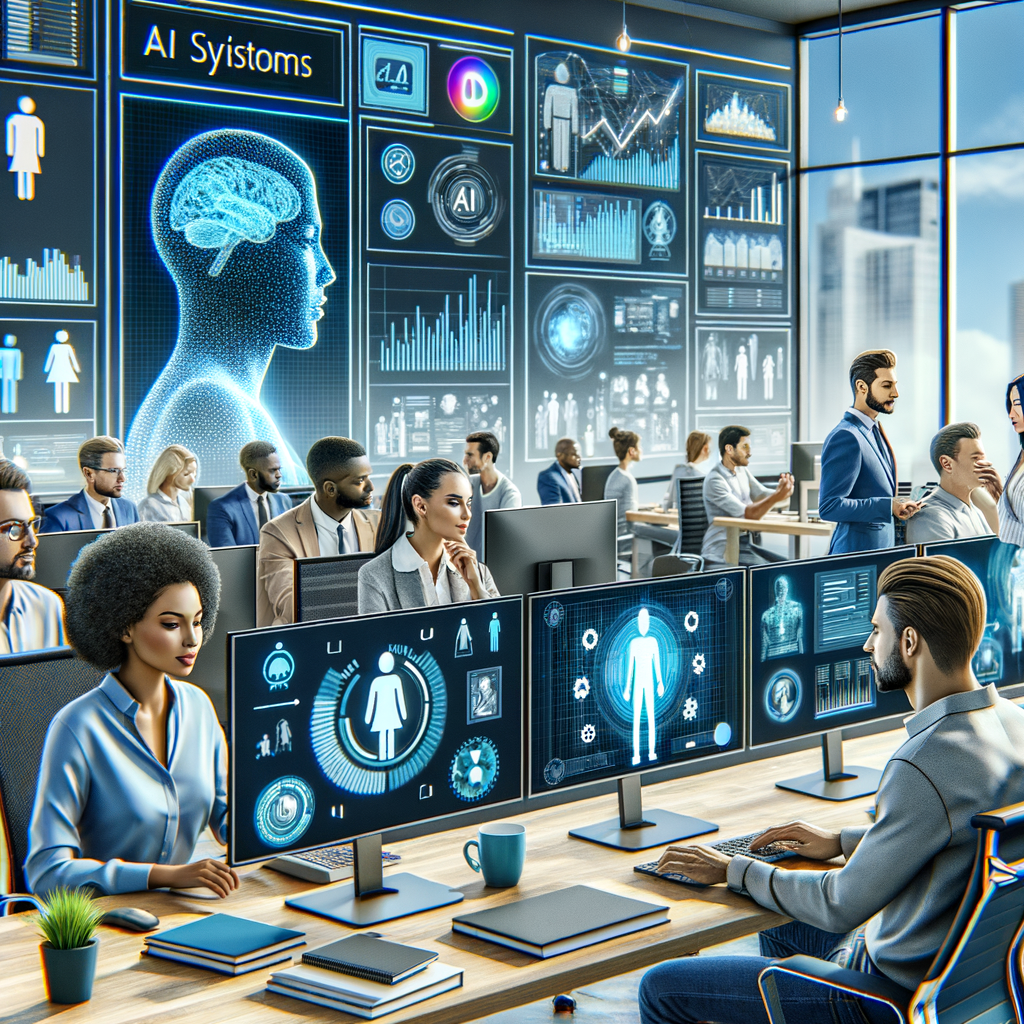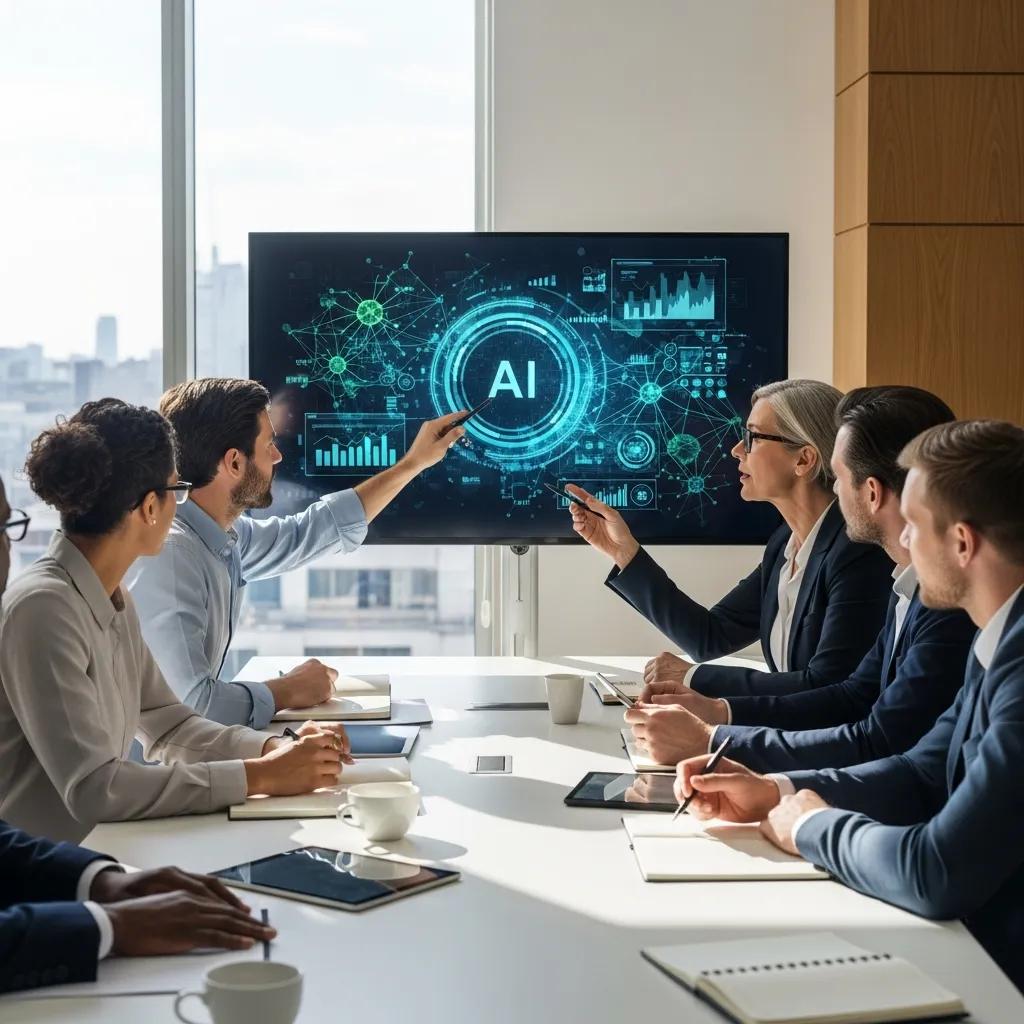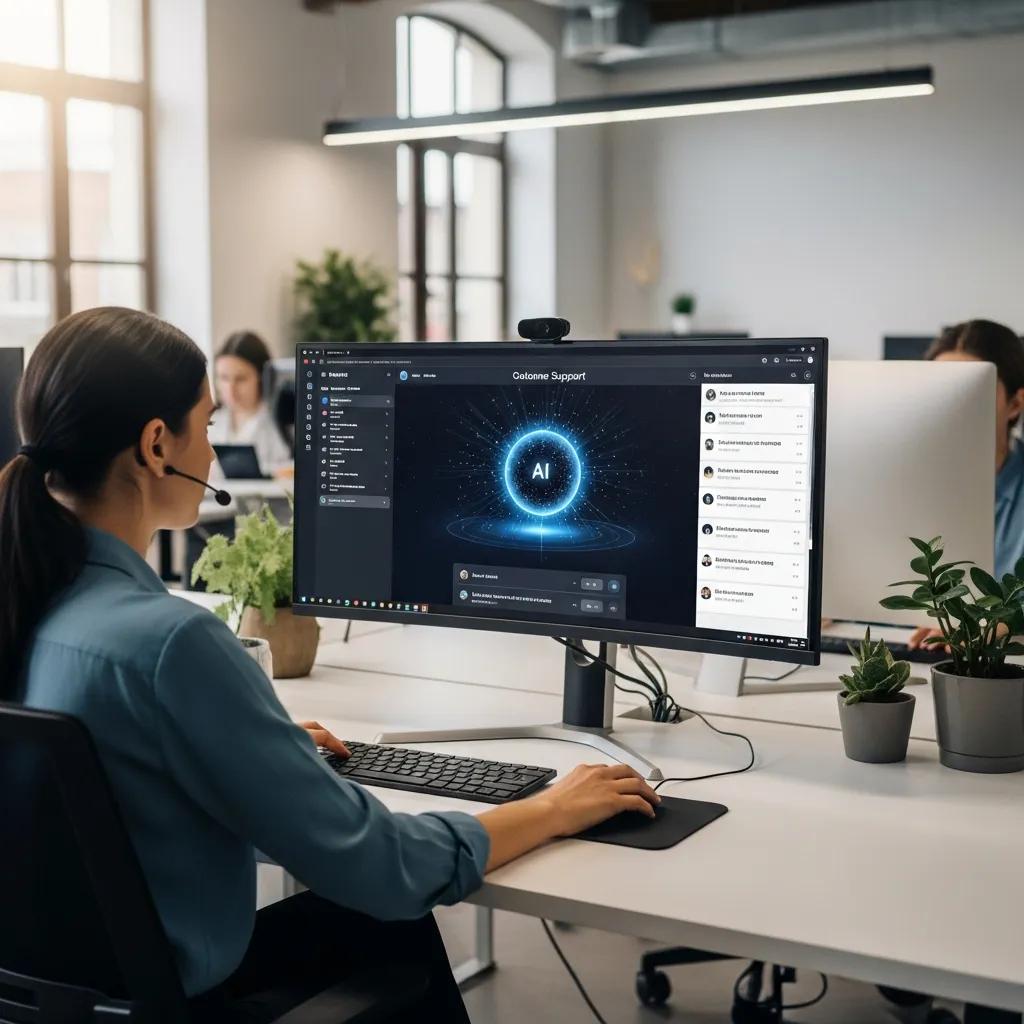AI is changing how we work. AI systems for workplace optimization help us do our jobs better, not replace us. This shift has some folks excited, while others are concerned.
This article explores how AI systems for workplace optimization are making a difference now. We’ll also discuss challenges and what the future may hold. This exploration focuses on helping small to mid-sized business owners use AI to create happier, more efficient workplaces with improved employee experience.
How AI Is Already Optimizing Workplaces
AI is impacting different workplace functions. It boosts productivity, strengthens team dynamics, and provides better customer service. AI systems have broad applications throughout the entire organization.
Streamlining HR Processes
AI sorts through tons of information quickly and without human bias (assuming training data isn’t biased, a key area to address). This makes AI useful for talent acquisition, filtering job applicants to identify promising candidates based on a wide range of data points.
AI tools for natural language processing can even analyze resumes and cover letters for sentiment analysis and other important factors. Think 79% of HR departments use automation (according to SHRM).
Predictive Workforce Planning
AI doesn’t just react; it predicts. Using data analytics and predictive analytics, companies can foresee staffing levels, potential skill gaps, and market shifts. This allows proactive measures and adjustments to challenges.
Smarter scheduling tools match people to tasks at the right times, impacting employee productivity, leading to increased efficiency and worker satisfaction. These AI-powered tools greatly help with workforce planning and scheduling while maximizing productivity gains. They also enable companies to address future skills gaps, creating more opportunities for online training to boost employee morale.
Personalized Learning and Development
AI-driven platforms personalize learning experiences based on skill gaps and provide the most relevant training material. They analyze employee performance to identify areas for improvement and suggest relevant employee training opportunities.
These platforms act like personal tutors and contribute to improved employee engagement. They deliver a more effective and targeted approach to learning and development, supporting continuous skill development and adapting to the evolving labor market. These ai-powered scheduling tools can drastically increase employee productivity.
AI Systems for Workplace Optimization: Addressing Challenges
AI isn’t perfect. There are issues to address to truly experience the benefits of AI.
Data Bias
AI systems need reliable, unbiased data. Bad data creates bad outcomes, like discriminatory hiring practices. Ensuring fair and impartial datasets is an ongoing challenge. Data integrity is vital for reliable AI-driven insights.
Addressing human bias in datasets is crucial to achieve fair and objective results from AI technologies. These tools provide data-driven recommendations and remove much of human bias. Careful attention to this aspect will impact employee experience in many ways. How well companies address human bias issues will impact employee productivity for the better.
Privacy and Security
AI needs lots of data, sometimes involving private information. Keeping this data safe requires robust security measures.
Companies must be vigilant in protecting sensitive data while adhering to all relevant privacy and security protocols (avoiding privacy violations). This responsible approach to data management fosters trust and ensures ethical AI adoption.
The Human Element
AI helps human workers, not replaces them. Effective change management is crucial when introducing AI systems for workplace optimization into existing workflows.
Open communication and collaboration tools are essential for addressing employee concerns and gaining buy-in for AI adoption. AI augments human capabilities, not replaces them (improving employee experiences).
Finding the balance between automation and human intuition supports staff, and helps answer questions from employees as AI continues to be incorporated into management practices.
The Future of AI-Powered Work
AI is rapidly evolving. The coming years will bring significant changes to the way we work.
Here are some predictions for the future:
- Hyper-Personalization: AI will learn your working styles, providing tailored experiences. This can be seen across digital transformation through AI implementation to create truly virtual assistant experiences.
- Proactive Well-being: AI will focus on employee well-being (as argued by OpenStax), offering insights to reduce burnout and foster team cohesion. AI tools are starting to take sentiment analysis very seriously by reviewing posts across many social media sites to proactively suggest improvements.
- Rise of the Chief AI Officer: A new C-suite position will guide AI strategy, bridging the gap between tech and business operations. Companies are starting to embrace AI systems for their benefits, especially for support process, where they offer a strong positive impact.
FAQs about AI systems for workplace optimization
How can AI be used in the workplace?
AI can automate tasks, analyze data for decision-making, personalize training, and enhance customer service. AI tools for space utilization can drastically improve real estate costs for office space for many types of organizations. Companies looking to reduce costs without reducing support staff will benefit the most from such tools.
How is AI used in workforce management?
AI optimizes schedules, predicts staffing needs, manages employee performance, and streamlines HR processes.
How can AI be used to increase efficiency in the workplace?
AI automates repetitive tasks (improving efficiency through smarter scheduling), analyzes workflows, and optimizes resource allocation.
What is AI based optimization?
AI-based optimization uses algorithms to improve processes, allocate resources, and make better decisions. AI-based optimization assists in everything from workforce management to resource allocation.
Summarizing the Way Forward
AI systems for workplace optimization offer powerful ways to improve productivity and worker well-being. While there are challenges like data bias and ethical considerations to address, AI’s potential is immense.
Those who adopt and use these AI tools effectively are likely to thrive. As more companies embrace the transformative potential of AI, the benefits for the workplace and business success are very likely to become significant.






